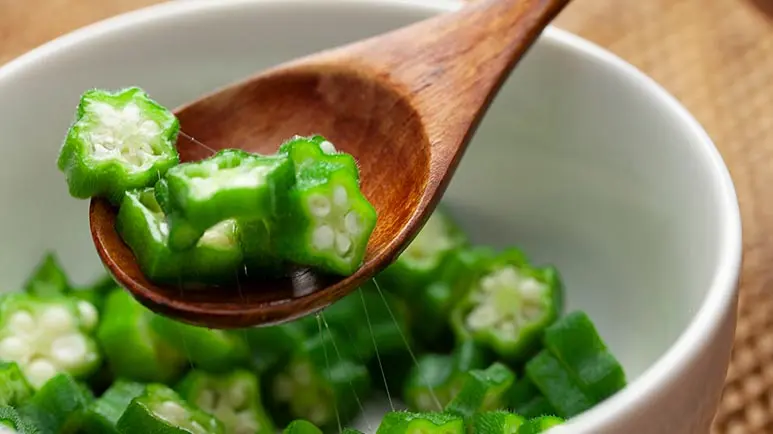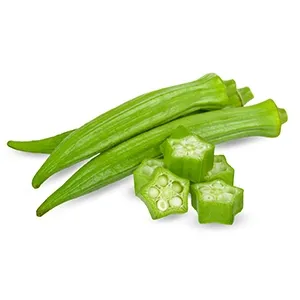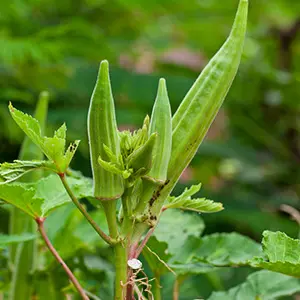Okra: This Veggie Packs Antioxidants to Boost Your Pet's Vitality
Valued for its diverse culinary applications, research shows this ancient veggie is rich in prebiotics and phenolic compounds that may benefit your pet's health.

STORY AT-A-GLANCE
- Okra contains bioactive compounds such as quercetin and polysaccharides, which may help boost your pet’s antioxidant capacity and and natural defense mechanisms
- Okra is also rich in prebiotic fiber that help nourish your pet’s existing gut microbiome and promote good gut health
- You can offer okra as a training treat or add it as a topper to your pet’s nutritionally balanced, homemade meal to maximize its use in your pet’s diet
Editor's Note: This article was originally published May 2, 2024.
A biologically appropriate diet ideally includes appropriate amounts of roughage, which are low-glycemic vegetables and polyphenol-rich fruits. Fiber coming from fresh fruits and veggies plays a crucial role in helping promote gut health and digestive function in both dogs and cats.
One vegetable you can try offering your pet for roughage is okra. According to published research, not only does it contain prebiotics for your pet’s gut function, but it also contains bioactive compounds that may help promote overall health.
What Is Okra?
Okra (Abelmoschus esculentus) is a hairy annual plant belonging to the mallow family, a diverse group of plants that include cacao, cotton, hibiscus and durian.1,2 Its most defining characteristic is its green color, with a length of around 10 to 30 centimeters that slightly curves. Once opened, it has a six-chambered pod containing seeds.3 Many cultures use okra in different ways. For example, it can be eaten raw or pickled for a longer shelf life.4 It also contains mucilage, which acts as a natural thickener when cooked.5
Okra Trivia

The term “okra” has West African roots, originating from the Igbo ethnic group in Nigeria, where the plant is called “ọ́kụ̀rụ̀” in Igbo language.6,7
Bioactive Compounds in Okra
Okra is rich in various bioactive compounds composed of phenolic sources, as well as polysaccharides, which may help promote health. The polysaccharides in okra account for its viscous characteristics.8 A 2022 study on mice noted that polysaccharides exhibit antiaging properties, specifically supporting overall resilience and improving antioxidant capacity to boost wellness.9
As for its phenolic aspect, quercetin, catechin and rutin are found in okra.10 Quercetin, in particular, plays an important role in promoting health. For instance, in vitro and animal tests noted that it possesses antiviral and anticancer activities.11 In another study involving test mice, researchers noted that quercetin helped inhibit experimental allergic encephalomyelitis and autoimmune myocarditis by blocking anti-inflammatory signals.12
When it comes to catechins, they provide similar anti-inflammatory benefits thanks to their potency in scavenging reactive oxygen species and the ability to inhibit pro-oxidant enzymes. They may also help protect against neurodegenerative diseases and memory regression.13
Other Nutritional Benefits of Okra
Okra is rich in prebiotics, which are plant fibers that act as nourishment for your gut microbiota.14 And as you know, a healthy gut contributes to a healthy pet. A study published in Open Veterinary Journal further supports this, highlighting the influence of gut microbiota on both the physiological and pathological aspects of animal health.15
Another notable characteristic of okra is that it naturally contains glutathione,16 which plays a role in supporting health. Glutathione is an essential amino acid that may help break down carcinogens,17 as well as help remove harmful advanced glycation end products (AGEs) from ultraprocessed foods.18 Glutathione also plays a role in folding proteins, fighting viruses, and regulating the body’s natural defenses, as well as acting as a cofactor for other antioxidants,19 giving it the moniker “master antioxidant.”20
Other antioxidants found in okra are lutein and zeaxanthin,21 which may help promote eye health in not just humans but animals as well. In a study published in the Journal of Nutritional Science, researchers noted that dogs who received increased intake of lutein and zeaxanthin showed improved eye function as well as reduced progression of refractive errors.22 A tablespoon of okra provides 17.5 micrograms of these carotenoids.23
The same tablespoon of okra also provides 18.68 milligrams of potassium.24 This mineral plays several roles in animal health, such as maintaining water balance, regulating heartbeat, metabolizing carbohydrates and proteins, as well as activating enzymes.25
Did You Know?

It’s believed that okra originated from the Abyssinian center of cultivated plants, a place now known as Ethiopia.26
How to Add Okra to Your Pet’s Diet
Note that misinformation about many healthy fruits, vegetables, nuts, seeds, herbs and spices abounds on the internet. This is because websites have labeled all risks (such as the risk of overconsumption causing gastrointestinal issues or choking on too large of pieces or pits) as “toxicities,” which isn't true but has managed to confuse millions of pet lovers, nonetheless.
In the case of okra, there are no safety concerns pet parents need to worry about, as it’s safe and beneficial for animal companions. It works great as a food topper to easily give your pet’s food a nutrient boost. You can also slice it into small, bite-sized pieces and offer it as a training treat or use it as an ingredient to your pet’s homemade treat recipes.
Okra can be fed to pets either raw or gently cooked via steaming. Keep in mind that healthy “extras” like this should make up less than 10% of your pet’s daily caloric intake.
Top Producers of Okra Around the World

India is the world’s largest producer of okra, coming in at 6.87 million tons. Second place belongs to Nigeria, which produces close to 2 million tons. Third is Mali, which produces nearly 1 million tons.27

Is Okra a Sustainable Crop?
Okra, when grown naturally, has a low carbon footprint. Reports indicate that a total of 0.25 kilograms of carbon dioxide is emitted to produce a kilogram of fresh okra. This is equivalent to a car driving half a mile, or three-fourths of a kilometer.28
In addition, okra does not belong in the Environmental Working Group’s Dirty Dozen list.29 However, you should still do your due diligence when buying it. According to a study published in 2022, certain countries use wastewater to irrigate their crops, including okra, leading to potential health risks.30
If you’re considering okra for your pet (and your own meals), take a close look at where the vegetable is produced to safeguard your and your pet’s health. Choose spray-free/organic varieties from your local farmers market, whenever possible.
Sources and References
- 1 Britannica, “Okra”
- 2 Britannica, “Malvaceae”
- 3,4 Molecules. 2019 Jan; 24(1): 38, 1. A Mini Overview of Okra Abelmoschus Esculentus (L.) Features
- 5 The Spruce Eats, “What Is Okra?”, September 8, 2023
- 6 Bionity, “Okra”
- 7 Britannica, “Igbo”
- 8,10 Molecules. 2019 Jan; 24(1): 38, 2.1 Main Plant Compounds and Their Interactions Assessment
- 9 Nutrients. 2022 Dec; 14(24): 5330, Abstract
- 11 Nutrients. 2016 Mar; 8(3): 167, Abstract
- 12 Nutrients. 2016 Mar; 8(3): 167, Mechanism of Action in Animal
- 13 Molecules. 2018 Apr; 23(4): 965, Abstract
- 14 Foods. 2019 Mar; 8(3): 92, Abstract
- 15 Open Vet J. 2019 Jul-Sep; 9(3): 253–258, Abstract
- 16 Postharvest Biology and Technology Volume 195, January 2023, 112145, Abstract
- 17 Oxid Med Cell Longev. 2013; 2013: 972913, Abstract
- 18 Experimental Biology 2018 Meeting Abstracts April 2018, Volume 32, Issue S1, 538.14, Abstract
- 19 Vitam Horm. 2023:121:109-141, Abstract
- 20 Antioxidants (Basel). 2020 Jul; 9(7): 624, Introduction
- 21,23,24 USDA, “Okra, Raw”
- 22 J Nutr Sci. 2016; 5: e18, Abstract
- 25 Oregon State University, Potassium
- 26 Aggie Horticulture, “Okra, or "Gumbo," from Africa”
- 27 Helgi Library, “Which Country Produces the Most Okra?”
- 28 HEALabel, “Okra Benefits and Side Effects”
- 29 EWG, “Dirty Dozen”
- 30 International Journal of Food Contamination volume 9, Article number: 11 (2022), Abstract











